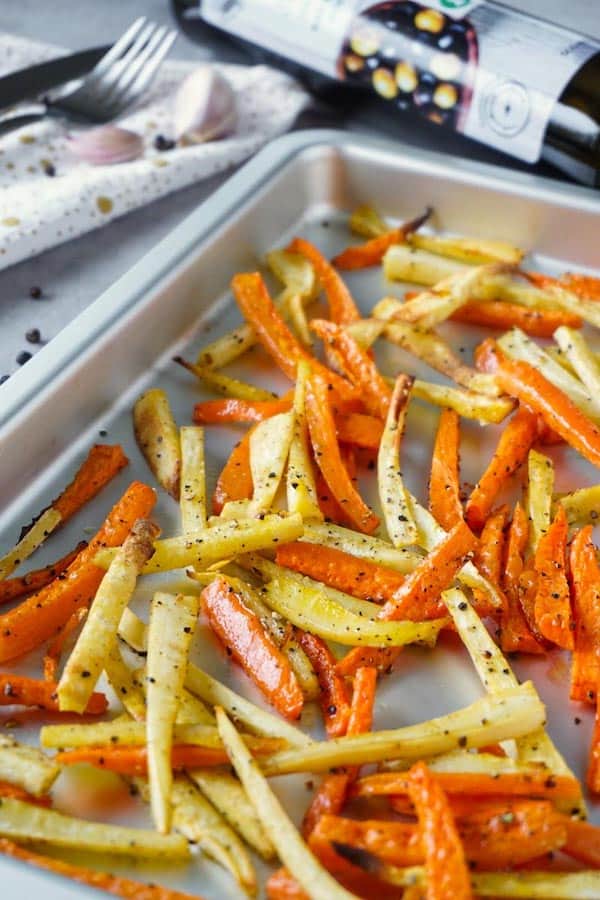
With this in mind, it is important to be sure of correct identification when picking any wild root (or any wild plant at all). Water hemlock poisoning can cause severe reactions and often leads to death ( 21, 22). Water hemlock grows in the wild, and it has a long underground root that shares the same appearance-color and shape-with parsnips.Īccording to the USDA, water hemlock is “ the most violently toxic plant that grows in North America” ( 20). Misidentification for water hemlockĪ toxic plant root called water hemlock is sometimes mistaken for wild parsnips. However, phytophotodermatitis is very rare, and merely handling or eating store-bought parsnips is of no concern. When UV light activates the furocoumarins contained within, they can cause a painful reaction when they come into contact with human skin, which can lead to short-term blistering ( 19).
Parsnips carbs skin#
The condition is caused by skin contact with the sap or potentially even the surface of the parsnip plant. Although this condition is usually associated with wild parsnips, regular garden parsnips are capable of causing it too ( 17, 18). Phytophotodermatitis is a condition caused by the skin coming into contact with plant chemicals called furocoumarins. With parsnips, there are no significant drawbacks, but there are some things to know. While parsnips are nutritious and generally healthy, all foods can have their negative points. Key Point: Parsnips taste delicious, and they are very versatile too. More research is necessary before making strong claims on this topic. In other words, we cannot assume that the effects of eating phytochemical-containing foods would be the same as seen from testing the isolated compounds in animal studies. Further, there are no human trials involving either falcarinol or falcarindiol. However, the research on phytochemicals in food and their effect on human health is at an early stage. Rodent studies suggest that falcarinol and falcarindiol may have anti-inflammatory properties ( 15, 16).

These two phytochemicals belong to a class of compounds called polyacetylenes. The phytonutrients present in parsnips include ( 14):Īmong these phytonutrients, parsnips contain particularly high amounts of falcarinol and falcarindiol. Phytochemicals are the chemical compounds found in plant foods such as carotenoids and polyphenols that may have potential health benefits. Key Point: Parsnips offer a high amount of fiber. Manganese has importance for regulating blood glucose levels, bone formation, immune function, wound healing, and it helps to activate numerous enzymes ( 9).įinally, potassium is an electrolyte mineral that plays a crucial role in blood pressure regulation ( 10). The three minerals present in the most significant amounts in parsnips are copper, manganese, and potassium.Ĭopper plays a role in energy production, the formation of connective tissue, and it is also important for iron metabolism ( 8). The mineral content of parsnips is reasonably good too, and a large parsnip offers ( 1): This nutrient is important for energy production and metabolizing dietary fats ( 7).


Pantothenic acid is another B vitamin (B5). It is also one of the most important nutrients during pregnancy, as it can help to prevent neural tube defects ( 5, 6). Vitamin C is an antioxidant vitamin that plays a crucial role in strengthening immune defense ( 3, 4).įolate is one of the B vitamins, and it has a vital role in energy production and growth. The list below shows the daily value (% DV) for each vitamin that one large parsnip provides ( 1):Īs shown in the above list, parsnips are particularly high in vitamin C, folate, and pantothenic acid. Parsnips offer a decent level of vitamins.

Research suggests that their glycemic index is 52 ( 2). Nutrition Facts Per Parsnip (160 grams) Calories/NutrientĪs shown in the table, parsnips are primarily a source of carbohydrate.


 0 kommentar(er)
0 kommentar(er)
